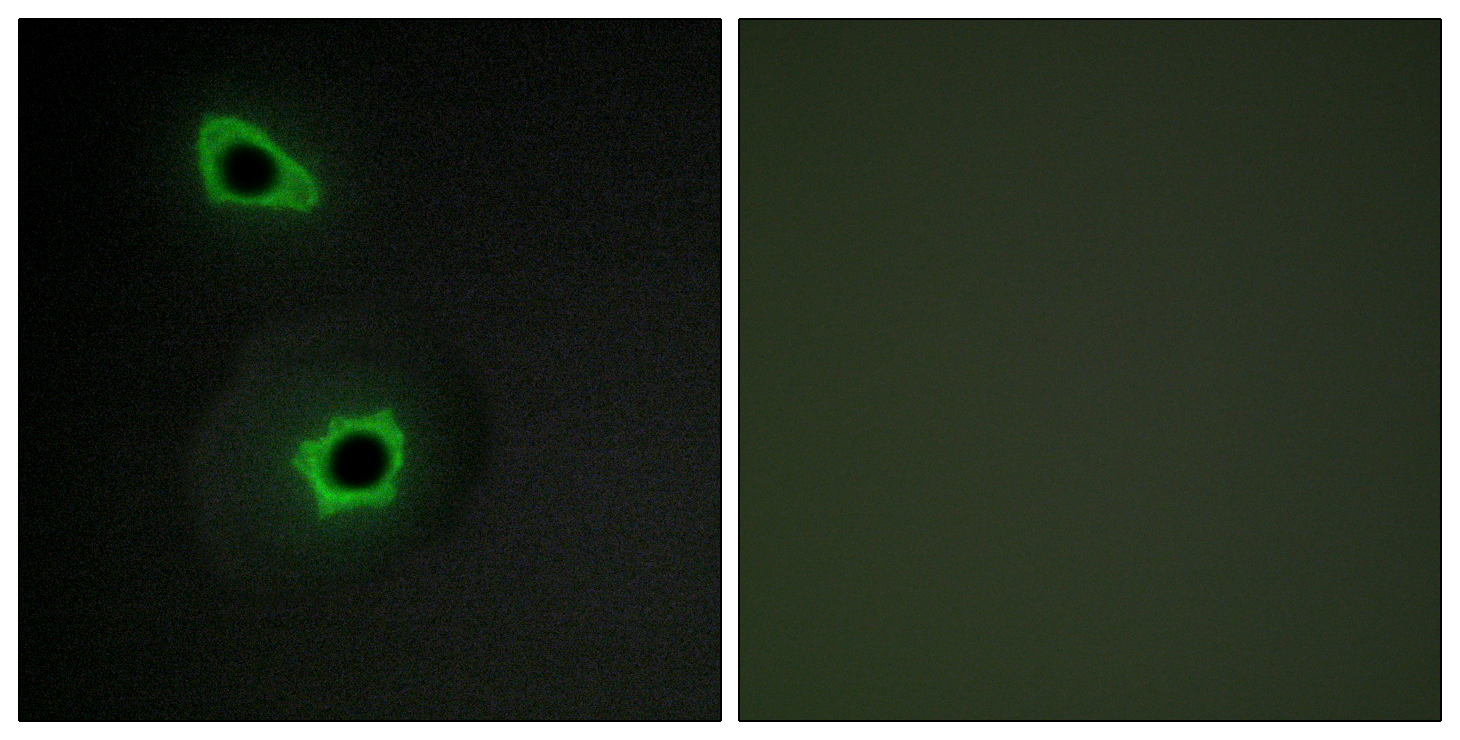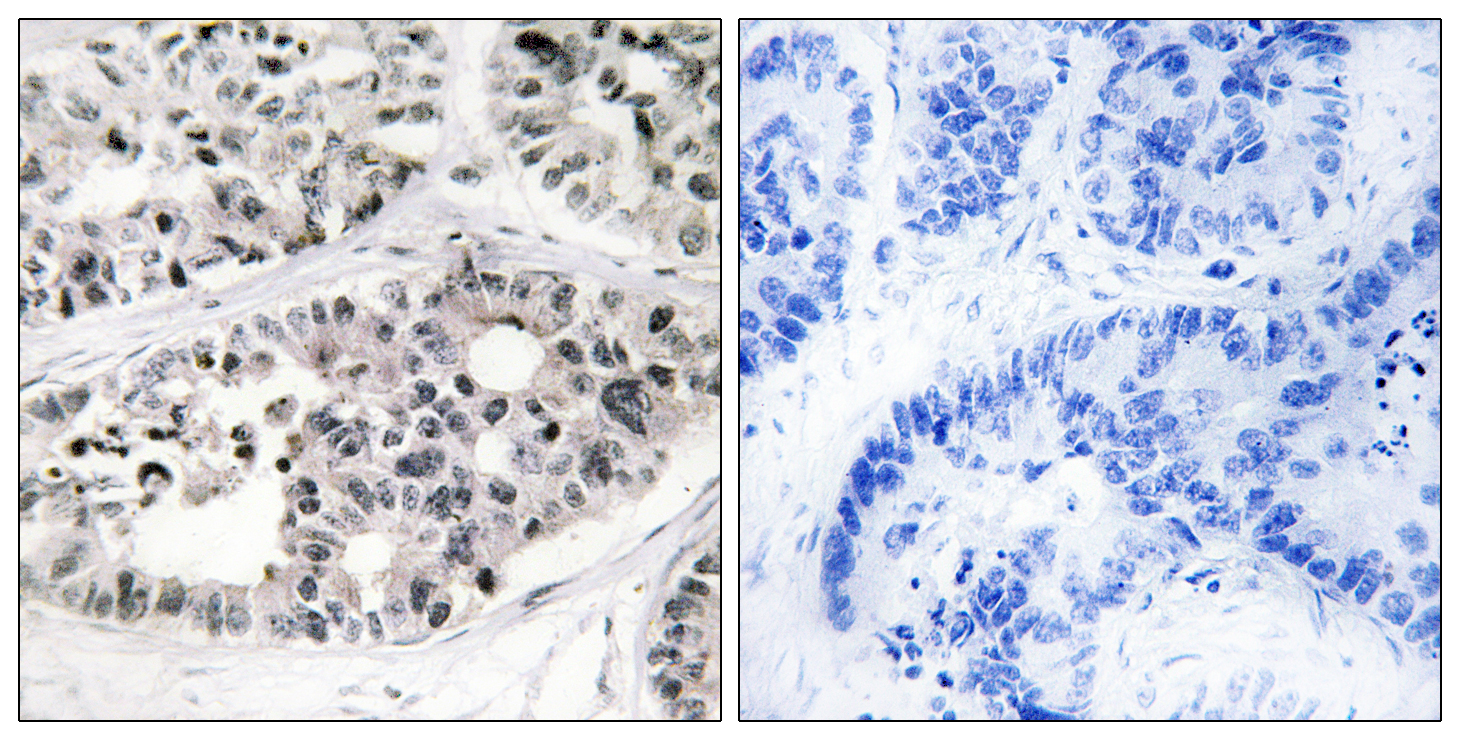COL7A1 Polyclonal Antibody
- Catalog No.:YT1037
- Applications:IHC;IF;ELISA
- Reactivity:Human;Mouse
- Target:
- COL7A1
- Fields:
- >>Protein digestion and absorption
- Gene Name:
- COL7A1
- Protein Name:
- Collagen alpha-1(VII) chain
- Human Gene Id:
- 1294
- Human Swiss Prot No:
- Q02388
- Mouse Gene Id:
- 12836
- Mouse Swiss Prot No:
- Q63870
- Immunogen:
- The antiserum was produced against synthesized peptide derived from human Collagen VII alpha1. AA range:1841-1890
- Specificity:
- COL7A1 Polyclonal Antibody detects endogenous levels of COL7A1 protein.
- Formulation:
- Liquid in PBS containing 50% glycerol, 0.5% BSA and 0.02% sodium azide.
- Source:
- Polyclonal, Rabbit,IgG
- Dilution:
- IHC 1:100 - 1:300. IF 1:200 - 1:1000. ELISA: 1:5000. Not yet tested in other applications.
- Purification:
- The antibody was affinity-purified from rabbit antiserum by affinity-chromatography using epitope-specific immunogen.
- Concentration:
- 1 mg/ml
- Storage Stability:
- -15°C to -25°C/1 year(Do not lower than -25°C)
- Other Name:
- COL7A1;Collagen alpha-1(VII) chain;Long-chain collagen;LC collagen
- Molecular Weight(Da):
- 295kD
- Background:
- collagen type VII alpha 1 chain(COL7A1) Homo sapiens This gene encodes the alpha chain of type VII collagen. The type VII collagen fibril, composed of three identical alpha collagen chains, is restricted to the basement zone beneath stratified squamous epithelia. It functions as an anchoring fibril between the external epithelia and the underlying stroma. Mutations in this gene are associated with all forms of dystrophic epidermolysis bullosa. In the absence of mutations, however, an acquired form of this disease can result from an autoimmune response made to type VII collagen. [provided by RefSeq, Jul 2008],
- Function:
- disease:Defects in COL7A1 are the cause of epidermolysis bullosa dystrophica (DEB) [MIM:131750, 226600]. DEB defines a group of blistering skin diseases characterized by tissue separation which occurs below the dermal-epidermal basement membrane at the level of the anchoring fibrils. Inheritance can be autosomal dominant or recessive. Various clinical types with different severity are recognized, ranging from severe mutilating forms to mild forms with limited and localized scarring, and less frequent extracutaneous manifestations. Mild forms include epidermolysis bullosa mitis and epidermolysis bullosa localisata.,disease:Defects in COL7A1 are the cause of epidermolysis bullosa dystrophica Bart type (B-DEB) [MIM:132000]. B-DEB is an autosomal dominant form of dystrophic epidermolysis bullosa characterized by congenital localized absence of skin, skin fragility and deformity of nails.,dis
- Subcellular Location:
- Secreted, extracellular space, extracellular matrix, basement membrane.
- Expression:
- Keratinocyte,Placenta,Spleen,
- June 19-2018
- WESTERN IMMUNOBLOTTING PROTOCOL
- June 19-2018
- IMMUNOHISTOCHEMISTRY-PARAFFIN PROTOCOL
- June 19-2018
- IMMUNOFLUORESCENCE PROTOCOL
- September 08-2020
- FLOW-CYTOMEYRT-PROTOCOL
- May 20-2022
- Cell-Based ELISA│解您多样本WB检测之困扰
- July 13-2018
- CELL-BASED-ELISA-PROTOCOL-FOR-ACETYL-PROTEIN
- July 13-2018
- CELL-BASED-ELISA-PROTOCOL-FOR-PHOSPHO-PROTEIN
- July 13-2018
- Antibody-FAQs
- Products Images

- Immunofluorescence analysis of COS7 cells, using Collagen VII alpha1 Antibody. The picture on the right is blocked with the synthesized peptide.

- Immunohistochemistry analysis of paraffin-embedded human lung carcinoma tissue, using Collagen VII alpha1 Antibody. The picture on the right is blocked with the synthesized peptide.



